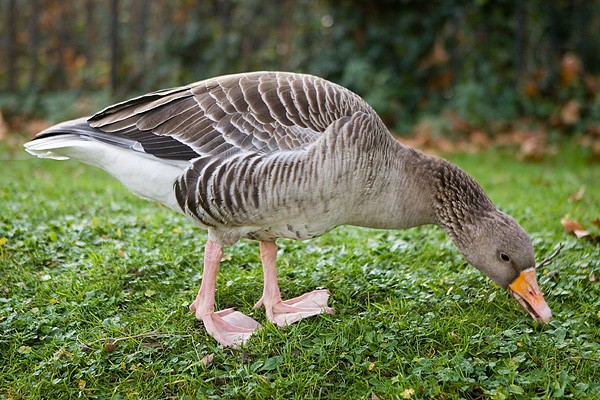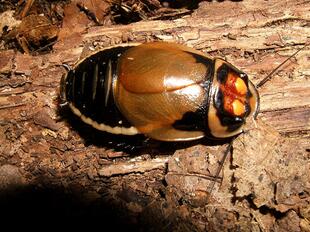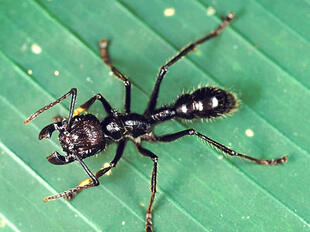
Greylag goose(Anser anser)
Phylum —chordata
Class — aves
Order — anseriformes
Family — anatidae
Genus – anser
Appearance
Greylag goose plumage is grayish-brown, with pale margins on feathers in the upper part. In the lower part it has a white belly, and grayish shading on the lower breast. Similar to all of this is the neck and the head. It has an orange, large bill. The feet and legs are flesh tissue colored, and in most adults there is spotting and blotching in most adults. Young birds do not have this characteristic, and have grayish legs. On average the length of a mature bird is 80 cm (31 inches). The mass of the birds tends to be in the range of 2500 to 4100 g. Wingspan reaches 76 to 89 cm.
Habitat
During the summer the greylag geese live in Scotland, Iceland; Scandinavia and Eastward to Russia, as well as Poland and Germany. The Iceland birds migrate in autumn to the British Isles, and usually arrive in October. The Netherlands, Spain, France, eastern Mediterranean, and North Africa are places in which the rest of the European population spends winter.
Behavior
Greylag geese are gregarious birds and form flocks. Pairs with young stay together as a family group, migrating southwards in autumn as part of a flock, and separating the following year. Greylag geese are diurnal and forage on the ground or in water. When on land these birds are able to run rapidly and escape predators without difficulty. Greylags have a loud cackling call similar to that of the domestic goose. There are various subtle variations used under different circumstances, and individual geese seem to be able to identify other known geese by their voices. The sound made by a flock of geese resembles the baying of hounds. Goslings chirp or whistle lightly, and adults hiss if threatened or angered.
Diet
Greylag geese are largely herbivorous and feed chiefly on grasses. They also eat leaves, berries, water plants, glean grain on cereal stubbles and sometimes feed on growing crops such as oats, wheat, barley, buckwheat, lentils, peas, and root crops. These birds may also consume small fish, amphibians, crustaceans, mollusks, and insects.
Reproduction
Greylag geese are monogamous and mate for life. Breeding season usually occurs in April-May. Greylags nest on the ground among heather, rushes, dwarf shrubs or reeds, or on a raft of floating vegetation. The nest is built from pieces of reed, sprigs of heather, grasses, and moss, mixed with small feathers and down. Females lay 4 to 6 creamy-white eggs which soon become stained. The female does the incubation, which lasts about 28 days, while the male remains on guard somewhere near. The goslings are precocial and able to leave the nest soon after hatching. Both parents are involved in their care and they soon learn to peck at food and become fully-fledged at 8 or 9 weeks. Young greylag geese become reproductively mature when they are 2-3 years old.
Most greylag geese live until they are twenty years old.
In captivity
For representatives of this breed, we recommend a wooden or clay-concrete structure with a floor.The height of it should be at least 20-30 cm from ground level. This is a very important point to pay special attention to. In the room where greylag geese will be kept, the floor should not be wet, as this can adversely affect the productivity of the livestock. It is desirable that the flooring in the shed is wooden. In a damp room, the bird's feathers will constantly get dirty, which will significantly reduce their thermal conductivity and may even cause the development of birds ‘certain diseases. Greylag geese that are constantly cold tend to consume more food, so the cost of keeping them will increase significantly.
In the shed where the birds will be kept, you must use bedding. It is believed that if you treat it with superphosphate once in 7 days at the rate of 0.2 kg of fertilizer per 1 m2 of floor, in the spring you can get high-quality fertilizer for the garden. This practice allows you to dry the litter and reduce the risk of ammonia release from the geese's waste products. For bedding, you can use hay, sawdust or silt. If you plan to grow poultry all year round, you should stock up on at least 40 kg of litter for 1 goose.
It is necessary to take care in advance that there are no drafts in the room. They can negatively affect the bird`s life. The room must be equipped with feeders for different types of food, as well as drinkers. It is very important to monitor the cleanliness of the room, removing the old bedding in a timely manner. Feeders and drinkers should be cleaned periodically with the use of disinfectants. Creating good conditions for keeping geese of this breed is not difficult. However, this point is extremely important, since wet bedding, drafts and dirt in the poultry house will inevitably lead to an increase in the incidence of poultry.
Nutrition of representatives of this breed requires special attention. Greylag geese in a short time usually grow large only in those farms where the owners pay a great attention to this aspect. Pasture management is recommended throughout the spring and summer period to reduce costs. If a suitable meadow or pond is available, you can limit yourself to a single feeding in the morning. Usually these birds are given compound feed, fresh grass, as well as silage of legumes and cereals. Their diet is recommended to supplement with corn and vitamin supplements. With this approach to feeding in warm weather, birds quickly gain weight.
When keeping a bird in winter, you need to take care of a dense three-day meals for it. At this time, the main diet of greylag geese should be grain, cabbage leaves and root vegetables of all kinds. These birds are omnivorous, but you should take care of mixed feeds and mixtures for making mixers. There should be clean water in the drinkers. Only full feeding in winter ensures that the geese will start laying in a timely manner, and their eggs will be suitable for hatching or laying in an incubator.
 Russian
Russian
 English
English
























